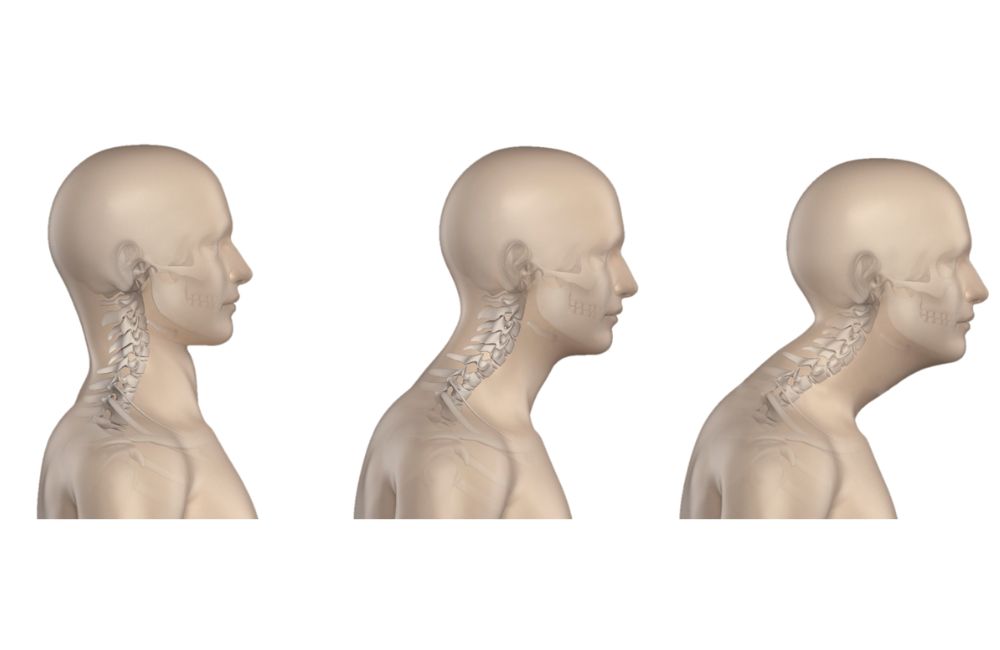
Forward head posture is a condition where your head is improperly positioned in front of your neckline.
This imbalance of head position is common yet has many health implications. It may not only lead to pain but also negatively affect your entire body’s posture.
Correcting the forward head posture can help bring relief to some of the symptoms you may be suffering from and restore your body’s alignment.
You may also like:
7 Exercises That’ll Help Get Rid of Dowager’s Hump and Fix Your Neck Posture
What Is Forward Head Posture?
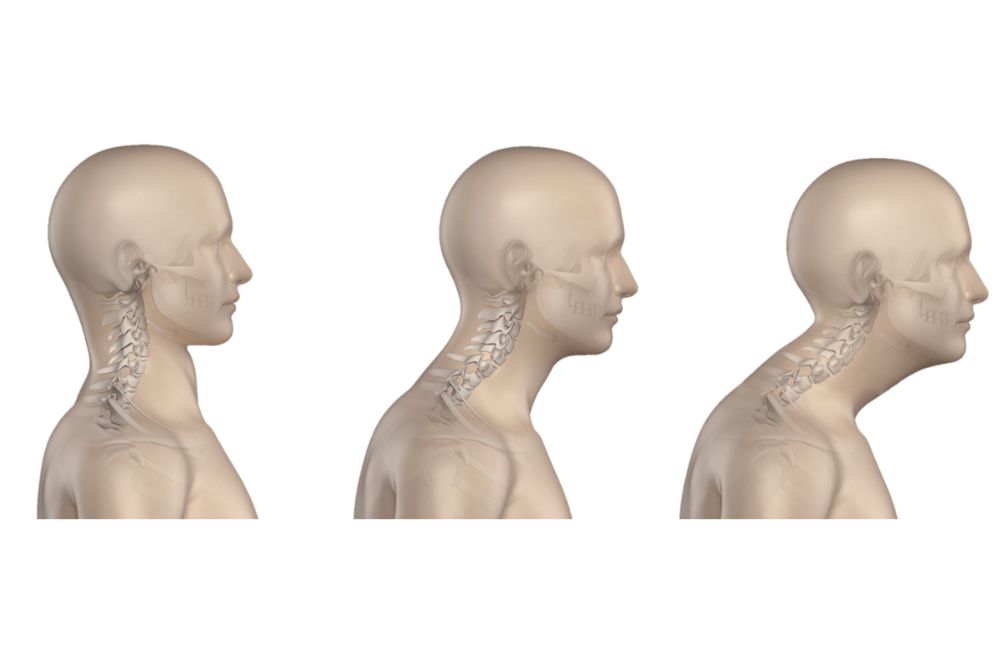
Forward head posture can most easily be thought of as the typical “slouched” posture.
Imagine a desk worker or student, who has his chin jutted forward, his shoulders rounded, and his back slumped.
In general, this condition is not considered serious. That being said, it is always prudent to talk to your doctor if you have any medical concerns.
What Causes Forward Head Posture (FHP)?
As was stated in the introduction, FHP develops when a person spends an excessive amount of time in a poor posture. Most often, the condition affects office workers and younger people who are constantly seated, working on a computer.
However, other factors can lead to FHP such as:
- Genetics
- General muscle weakness, especially in the upper body
- Acquired diseases and disorders
- Traumatic injuries
- And many others
Forward Head Posture Symptoms
Besides just creating poor posture, FHP can lead to a host of uncomfortable symptoms. For instance, the disorder may cause any or all of the following:
- Pain in the shoulders and/or neck
- Headaches
- Altered balance
- Radicular nerve symptoms in the upper extremities
- Reduced flexibility
- TMJ
Treatments for Foward Head Posture
Fortunately, many treatments exist to help with the symptoms and the underlying causes of FHP.
One such treatment option is corrective exercise. If you have noticed altered posture in your neck indicative of FHP, give these exercises a try!
1. Chin Tucks in Supine
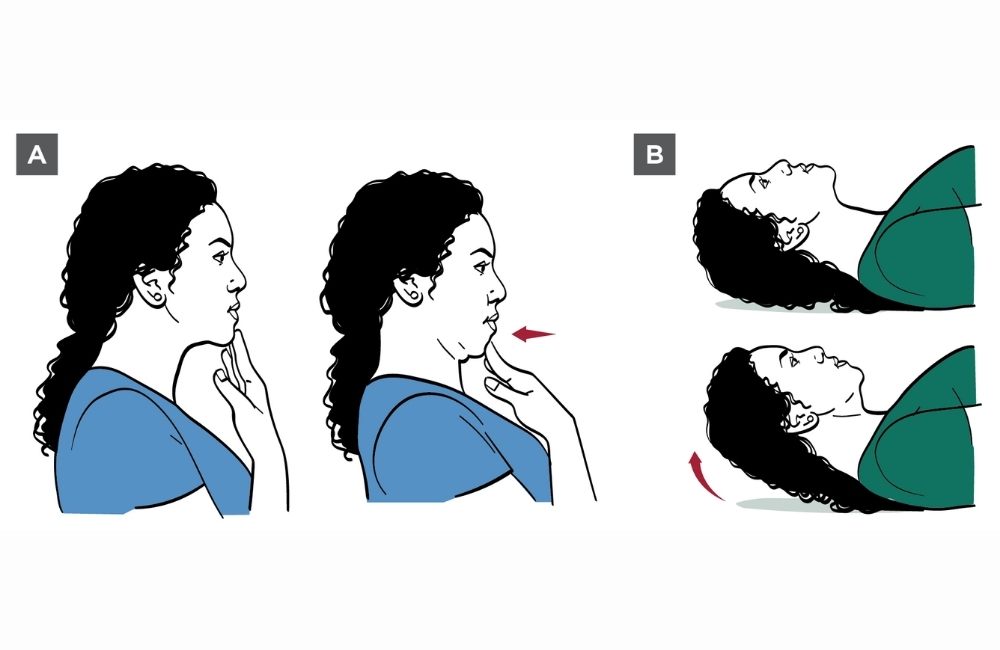
Chin tucks are one of the first go-to exercises for the treatment of FHP. This exercise is easy to complete anywhere, and even just a few reps a day can go a long way. To start, aim to complete 10 reps a day, holding the position for 10 seconds for each rep.
This exercise can also be performed standing.
How to Perform
- Lie flat on your back without a pillow underneath your head.
- Attempt to tuck your chin backward.
- For visualization purposes, imagine that you are attempting to give yourself a “double chin” while you perform this movement.
2. “W’s” on a Wall
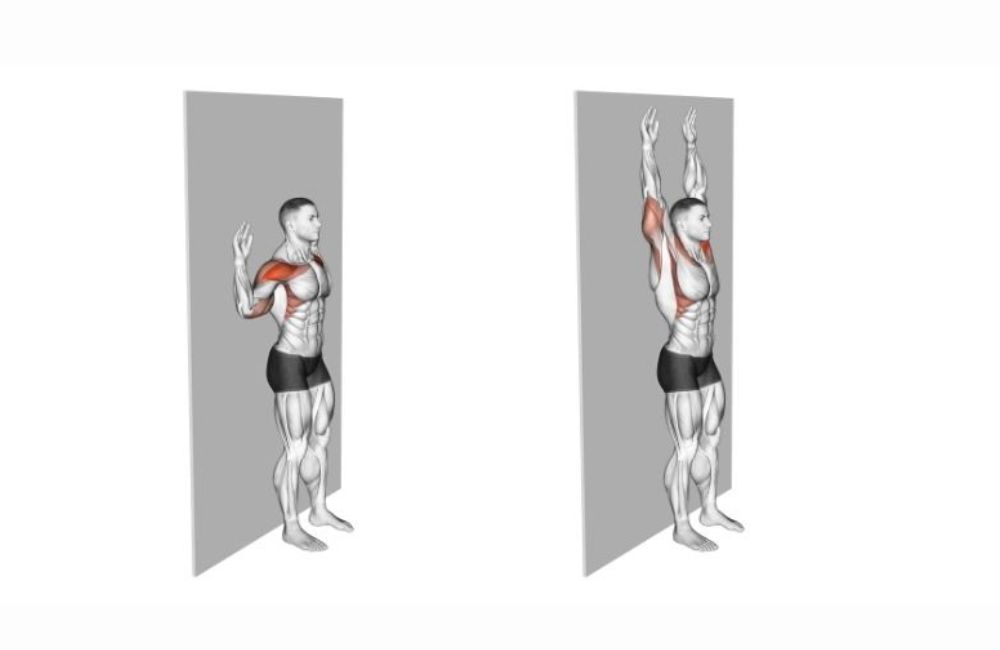
The ”W” exercise looks deceptively easy, but don’t be fooled! This exercise requires an incredible amount of mobility, strength, and flexibility. Aim for 10 reps a day to start.
How to Perform:
- Place your head, back, buttocks, and heels against a wall. (Your neck should be in the “chin tuck” position throughout the exercise)
- Next, place your arms and the backs of your hands on the wall in a “W” position (as if your arms are making a “W”).
- Maintaining this shape, attempt to slide your arms up and down the wall as far as you can without losing contact with the wall. Throughout the motion, the back of your head, your whole back, your buttocks, your heels, your elbows, and your hands should all remain in contact with the wall.
3. Trapezius/Neck Extensor Stretch
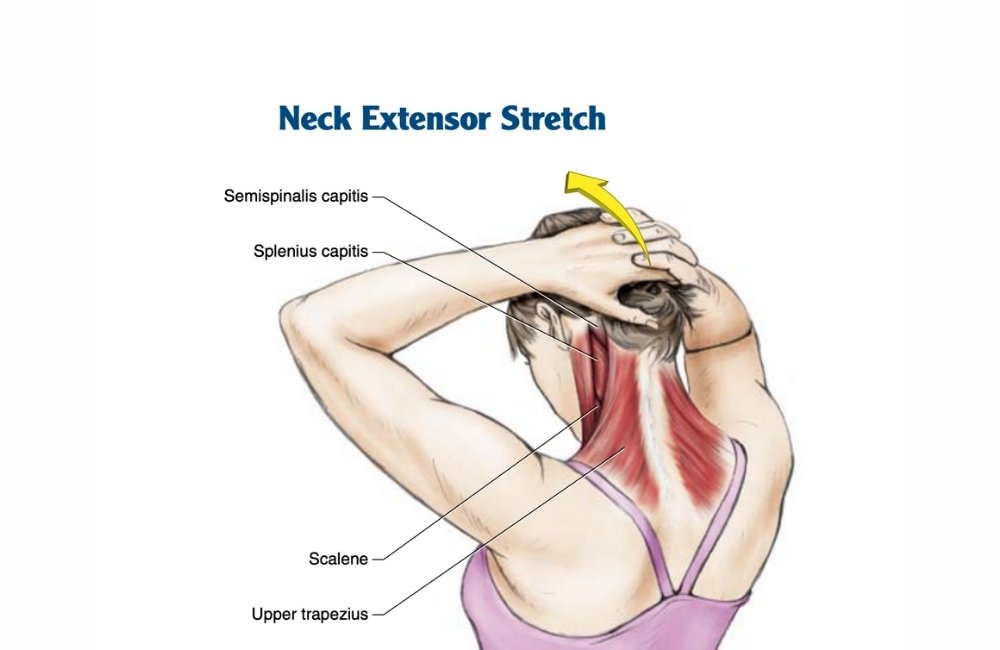
The muscles of the back and neck are critical for good posture. When these muscles are excessively tight, excessively weak, or both, it becomes very difficult for us to function optimally.
By regularly stretching out this area, we can reduce the symptoms of forward head posture and return to a more ideal alignment.
How to Perform:
- Grasping your head lightly with one or both hands, gently pull your chin toward your chest.
- You should feel a mild stretch in the back of your neck.
- Once you’ve taken the stretch as far as you can comfortably, hold this position for 30 seconds.
- Repeat the stretch 4 times daily.
Alternative/Complementary Treatments for FHP
As you might imagine, exercise is not the only option when it comes to treating this tricky condition.
Some clinicians have found great success in using kinesiotape to help those suffering from FHP.
Furthermore, certain manual therapy techniques, such as cervical manipulations and massage, may also help with symptoms of the disorder.
The Importance of Postural Awareness
Our central nervous system (brain and spinal cord) are constantly receiving and sending out signals throughout the day.
In general, being in proper alignment throughout the day allows nerve signals to travel to their destinations more easily. For this reason, paying attention to your posture is crucial for good health.
Creating a sense of postural awareness is not always easy, but it can be done. If you struggle with being able to sense where your body is in space, using a mirror to check your posture is one easy, effective method.
Furthermore, professionals, such as physical therapists, can help you develop techniques for improving your posture day by day.
The ideal seated desk posture is generally thought to follow the 90-90-90 rule. This rule states that the knees, hips, and elbows should all be positioned in 90 degrees of flexion (bend).
Furthermore, you should ensure that your feet are flat on the floor and that your screen is at a height that enables you to look straight forward, rather than up or down.
Should You See Your Doctor for FHP?
As is the case with any medical condition, it is always a good idea to consult with your doctor.
Odds are, your FHP symptoms are related to your lifestyle. However, there may be certain pathologies or issues associated with the disorder that needs to be addressed medically.
Final Thoughts
Forward head posture is a disruptive and often painful condition. It is usually caused by lifestyle habits, such as texting or working with an improper desk setup. In many cases, FHP can improve with exercise and a few other complementary treatments such as manual therapy.
While FHP isn’t usually serious, it’s a good idea to touch base with your doctor about any symptoms you’re having, so that he or she can direct you to the appropriate provider or treatment.


